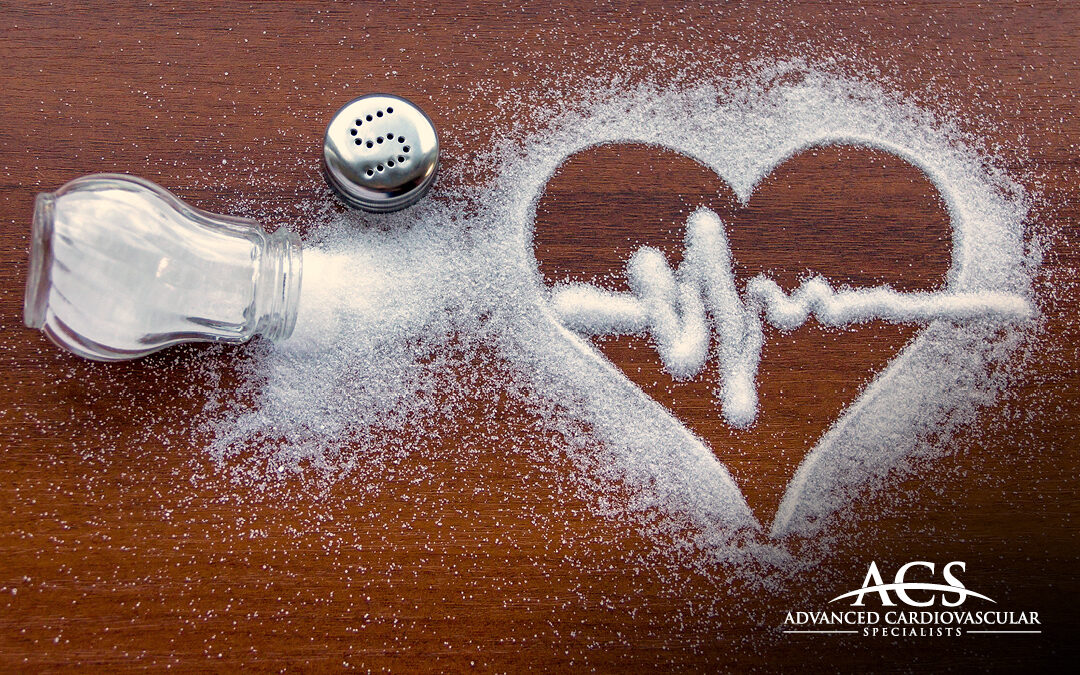Sodium, which is found in salt, is an essential mineral for controlling fluid balance, nerve function and muscle function. Consumed in the right amount, it helps maintain a healthy body. If you eat too much, you are putting yourself and your heart at risk.
How Does High-Sodium Intake Impact Your Health?
When you consume too much salt, the extra sodium draws water into your blood vessels. This increases the volume of blood, and blood pressure increases as a result. Chronic high blood pressure is a problem, as it is a leading cause of heart attack, heart failure, stroke and kidney disease.
For people who are salt-sensitive, the effect of sodium on blood pressure is even more significant than for those who are not salt-sensitive. Regardless of whether you are salt-sensitive or salt-resistant, most people will benefit from eating less sodium.
Other side effects of the water retention caused by excess salt can also include bloating and weight gain.
What Are The Recommended Guidelines?
Sodium should be kept below 2,300 milligrams per day. However, less is better, particularly for those with high blood pressure. A low-sodium diet of 1,500 milligrams or less is ideal for patients already dealing with high blood pressure. Although, all adults can benefit from this lower sodium level. The guidelines are the same for many people with heart failure. However, low-sodium diets may actually worsen outcomes for some patients. It is important for heart failure patients to discuss their sodium intake with their doctor before making any dietary changes.
How Can I Reduce My Sodium Intake?
With the majority of the sodium in our diets coming from packaged and prepared foods, reducing sodium intake requires more than just putting away the salt shaker. For some, it may mean reading nutrition labels on packaged foods and choosing lower-sodium options. Others may need a major diet overhaul.
Here are our top tips:
- Always read labels on packaged foods, and opt for low-sodium or no-sodium options.
- Try making some of your favorite packaged foods. For example, many condiments, salsas, dressings and sauces can be easily made at home, eliminating unwanted salt and other artificial ingredients that also impact health.
- Substitute salt or reduce salt in cooking by using herbs and spices.
- Eat more whole-foods. Vegetables, fruits, fish, poultry, beans (dried) and whole-grains like oats and brown rice are much lower in sodium than packaged foods.
- Avoid or reduce high-sodium foods like fast food, convenience frozen products, potato chips, crackers, butter, cheese and processed meats like bacon, sausages and deli meat.
Eating out can be a little trickier, but there are still some ways to ensure you’re eating a lower-sodium meal at your favorite restaurants.
Here are some tips:
- Skip the bread basket.
- Ask for your meal to be prepared without added salt, or ask if they have a low-sodium menu.
- Avoid fried foods and dishes with heavy sauces. Opt for foods that are grilled, broiled, baked, roasted or steamed instead.
- Ask for salad dressings on the side, or for olive oil and vinegar to mix your own.
- Watch your portion sizes.
It takes one to two months for your taste buds to adjust to eating less salt. If you decide to make big changes, remember that you will eventually get used to your new diet. Some find it easier to make small changes over a handful of weeks to gradually reduce sodium intake rather than making big cuts.
Because it can be hard to know how much sodium you are consuming, it is a good idea to start tracking your current sodium intake each day. From there, you can find out if you need to reduce your sodium intake for better health.
The team at Advanced Cardiovascular Specialists consists of North Louisiana’s leading experts in cardiovascular care. For more information or to schedule an appointment, please call our office at (318) 798-9400.

